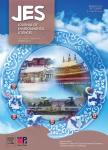Fine particulate matter(PM_(2.5)/PM_(1.0)) in Beijing,China: Variations and chemical compositions as well as sources
Fine particulate matter(PM2.5/PM1.0) in Beijing,China: Variations and chemical compositions as well as sources作者机构:State Key Laboratory of Environmental Simulation and Pollution ControlSchool of EnvironmentBeijing Normal UniversityBeijing 100875China Center for Atmospheric Environmental StudiesBeijing Normal UniversityBeijing 100875China School of EnvironmentTsinghua UniversityBeijing 100084China Department of Environmental Health Sciences School of Public Health University at AlbanyState University of New York One University Place RensselaerNY 12144USA Analysis and Testing CenterBeijing Normal UniversityBeijing 100875China
出 版 物:《Journal of Environmental Sciences》 (环境科学学报(英文版))
年 卷 期:2022年第34卷第11期
页 面:187-198页
核心收录:
学科分类:0830[工学-环境科学与工程(可授工学、理学、农学学位)] 07[理学] 070602[理学-大气物理学与大气环境] 0706[理学-大气科学]
基 金:funded by the National Natural Science Foundation of China (Nos. 22176014 21777008 21377012 and 21177012)。
主 题:Fine particles Haze Chemical species Seasonal variation Source apportionment
摘 要:Particulate matter(i.e.,PM_(1.0) and PM_(2.5)),considered as the key atmospheric pollutants,exerts negative effects on visibility,global climate,and human health by associated chemical compositions.However,our understanding of PM and its chemical compositions in Beijing under the current atmospheric environment is still not complete after witnessing marked alleviation during 2013–2017.Continuous measurements can be crucial for further air quality improvement by better characterizing PM pollution and chemical compositions in Beijing.Here,we conducted simultaneous measurements on PM in Beijing during 2018–2019.Results indicate that annualmean PM_(1.0) and PM_(2.5) concentrations were 35.49±18.61μg/m^(3) and 66.58±60.17μg/m^(3),showing a positive response to emission controls.The contribution of sulfate,nitrate,and ammonium(SNA)played an enhanced role with elevated PM loading and acted as the main contributors to pollution episodes.Discrepancies observed among chemical species between PM_(1.0) and PM_(2.5) in spring suggest that sand particles trend to accumulate in the range of 1–2.5μm.Pollution episodes occurred accompanied with southerly clusters and high formation of SNA by heterogeneous reactions in summer and winter,respectively.Results from positive matrix factorization(PMF)combined with potential source contribution function(PSCF)models showed that potential areas were seasonal dependent,secondary and vehicular sources became much more important compared with previous studies in Beijing.Our study presented a continuous investigation on PM and sources origins in Beijing,which provides a better understanding for further emission control as well as a reference for other cities in developing countries.



